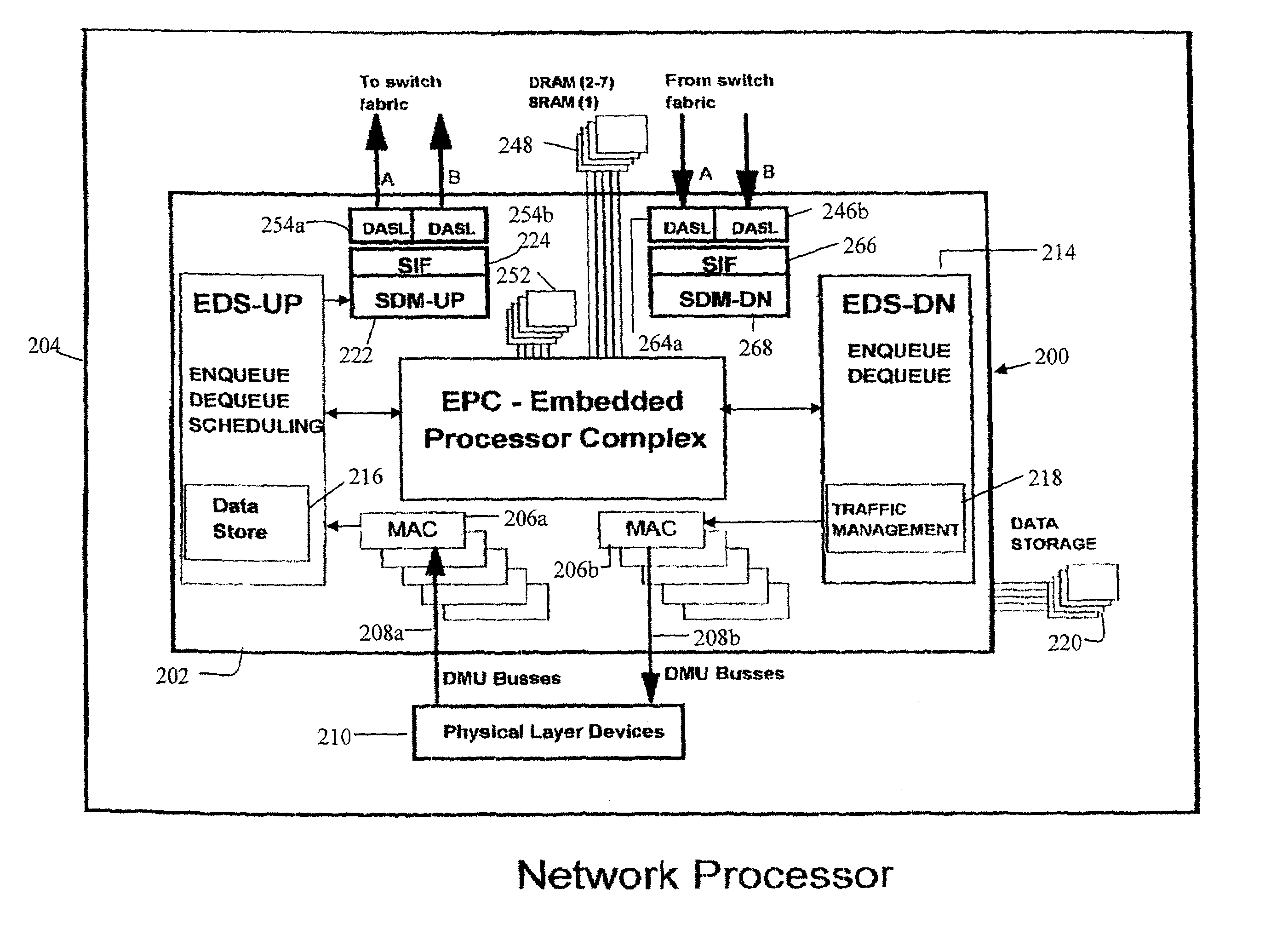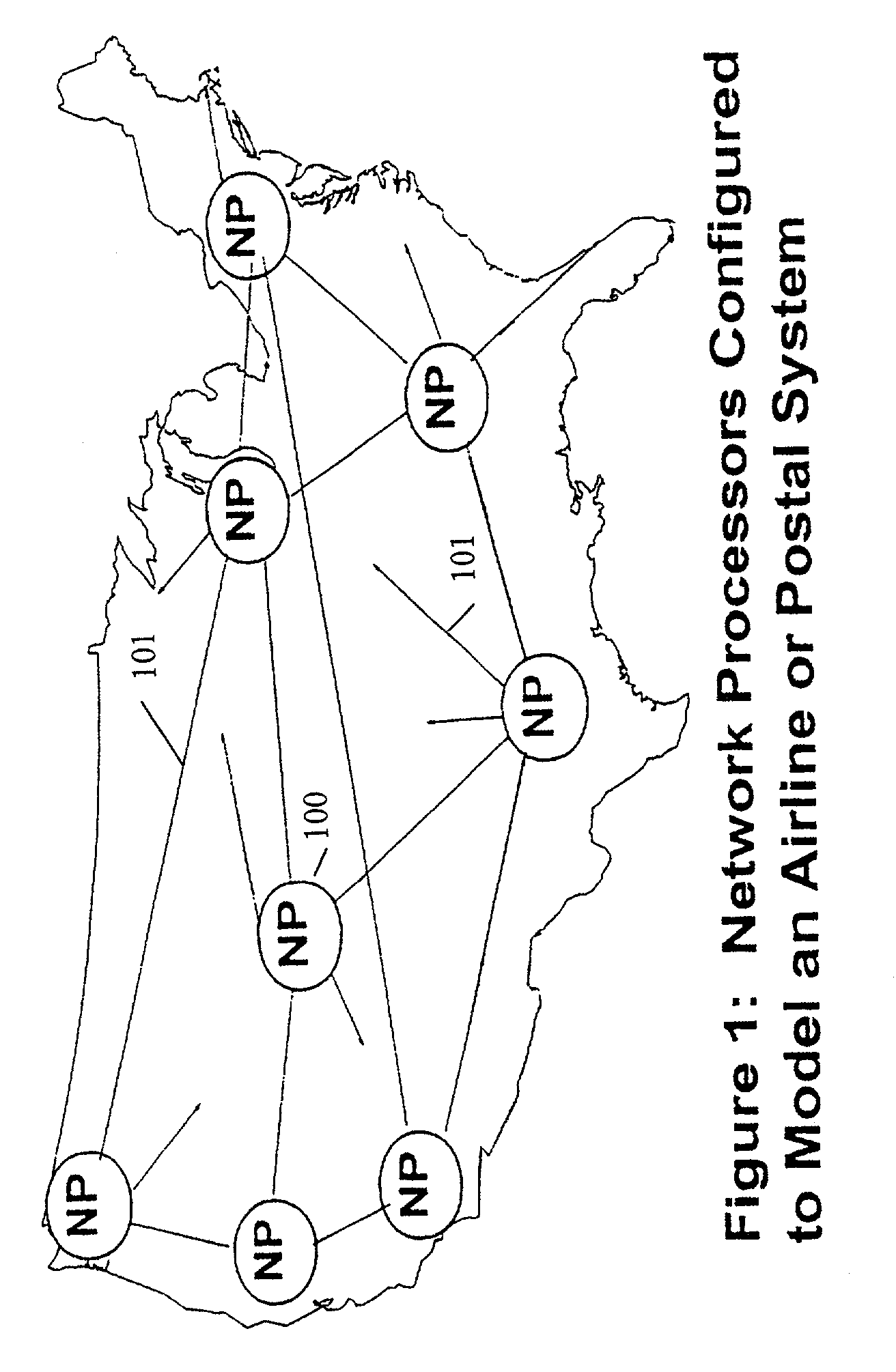Traffic routing management system using the open shortest path first algorithm
a traffic routing and management system technology, applied in the field of open shortest path first algorithm, can solve the problem of system setting the cost of links to that intersection at infinity, and achieve the effect of high performance capabilities
- Summary
- Abstract
- Description
- Claims
- Application Information
AI Technical Summary
Benefits of technology
Problems solved by technology
Method used
Image
Examples
Embodiment Construction
[0023]The invention can be described in simple terms with reference to an airline routing system. Hardware is constructed or assembled having a number of Network Processors 100, each one representing a hub in the airline system and appropriate interconnection links (See FIG. 1). This does not require an NP for each airport in the U.S. but may be limited to only those airports that act as interconnection points in the network. For example, Dallas, Chicago and JFK would have a dedicated NP. An NP would not be required to represent end of link airports, such as the Altoona Pa. Airport, which has no links except to the Pittsburgh Airport.
[0024]Each of the endpoint airports must be represented in the routing table of at least one NP; e.g. Altoona would be a link represented in the Pittsburgh routing table. Additionally, each NP would have a number of links 101 in its table, each representing the links that an airport has to other interconnection networks. For example, Pittsburgh's NP wou...
PUM
 Login to View More
Login to View More Abstract
Description
Claims
Application Information
 Login to View More
Login to View More - R&D
- Intellectual Property
- Life Sciences
- Materials
- Tech Scout
- Unparalleled Data Quality
- Higher Quality Content
- 60% Fewer Hallucinations
Browse by: Latest US Patents, China's latest patents, Technical Efficacy Thesaurus, Application Domain, Technology Topic, Popular Technical Reports.
© 2025 PatSnap. All rights reserved.Legal|Privacy policy|Modern Slavery Act Transparency Statement|Sitemap|About US| Contact US: help@patsnap.com



